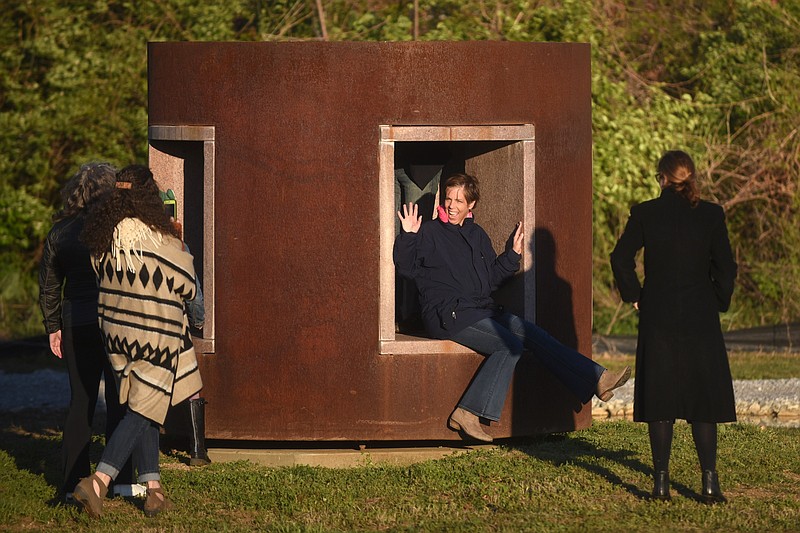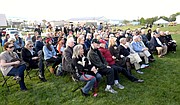Montague Park has come full circle.
Given to the city of Chattanooga in 1911 to be developed into a place for people to gather and observe the beauty of nature, a 30-acre tract there was recently dedicated as the Sculpture Fields at Montague Park.
Today, the property off Polk Street at 23rd Street is a veritable art playground, still a place to observe the beauty of nature, and one more unique attraction in what Outside magazine last year dubbed the country's Best Town.Its dedication and the opening in the same week of yet another phase of the Riverwalk offer residents two wholly different jewels rarely found in a city the size of Chattanooga.
In the century-and-change between the gifting of Montague Park to the city and its new life as the home of aluminum, steel, granite, concrete and bronze structures of various height, breadth, color and concept, it has lived a varied and not always easy life.
By the 1940s, the park was only a series of large holes in the ground, a former area resident described it in a 1983 Chattanooga Times article. One of those, a swimming area called the "Blue Hole," was so named because of the dyes that found their way into the low-lying acreage from nearby spinning or fabric mills.
Sometime in the late 1940s, according to Times Free Press archives, city officials began a sanitary landfill on the site to build up the property to a level where it might be used.
How sanitary it was is open to suggestion since property owners, merchants and residents often came before the then-City Commission to ask for relief from the odor.
By the mid-1960s, the city had completed its infilling, was planning $100,000 in landscaping, and had settled on the idea, with the Chattanooga Area Museum and Zoological Gardens Association, of a zoo and natural science center at the park.
A 1963 Chattanooga Times news story described the area around the park as "commercial" and "not attractive" and speculated that only if "the grounds are beautifully planted and tenderly cared for" will people come where they otherwise might not due to the "general unsightly appearance" of the surroundings.
By early 1968, with a fundraising campaign for the zoo having been dropped as premature, the site also was being suggested for municipal buildings, including a replacement for the overcrowded city jail. But a leader in the zoo group said the deed giving the property to the city stipulated it would be a public park or ownership would revert to the family that gifted it.
Later that year, suggestions began to turn toward Montague's use as a recreational park with tennis courts, athletic fields and a swimming pool. Three years later, with the infusion of .50 cents of federal money for every $1 the city spent, the first phase of what would become a softball and baseball complex was nearing reality.
From 1971 through 1983, the area grew to a half dozen or so fields and a motocross track. But in 1983 the site was included in a list of 139 hazardous waste sites that the state wanted to clean up with $2 million in what was called Superfund money.
A 1991 Greenpeace toxic waste report said surface soils at the park, which was said to draw 150,000 people per year, contained toluene and other dangerous chemicals and that subsurface soils found elevated levels of arsenic, copper, lead, acetone and PCBs.
Nevertheless, the park remained open until 2003, when officials said it could not meet state landfill cap standards.
As the soil was remediated over the next nine years, ideas for its use ranged from a par-3 golf course and driving range to volleyball or basketball courts to a return to softball fields. Even a sculpture garden, eventually, was mentioned.
Today, that garden is a multi-phase project that already encompasses 20 sculptures - many on small knolls - and eventually will include landscaped gardens, amphitheater and visitor center. But its stars are the 20-plus sculptures, which range up to the 65-foot "Anchors," which honors the five servicemen slain in Chattanooga by a terrorist last July.
The best part is it's free and once again fulfills the park's more than century-old mandate as a place where people can gather and observe beauty.

